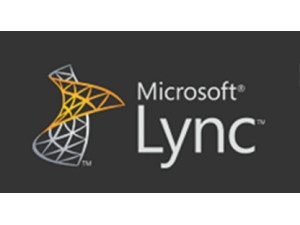
Microsoft Lync Server 2013 does a commendable job building on the features introduced in Lync Server 2010, making the transition to this new version compelling for IT managers and unified communications (UC) implementers.
Like its predecessor, Lync Server 2013 provides support for enterprise IM, presence and conferencing, with direct integration to the Microsoft Office suite of applications. (In case you're unfamiliar with Lync, presence is a feature that displays a user's availability, willingness to communicate and contact information.)
There are several significant architectural changes that simplify the deployment of Lync Server 2013, with one of the biggest being server role consolidation. I'll discuss the server role changes as well as other changes to Lync Server 2013's topology. I'll also discuss other noteworthy enhancements made to the:
* Role-based access control (RBAC) feature
* Disaster recovery, high availability and archiving features
* Edge Server services
* IM and presence features
* Conferencing features
* VOIP functionality, which is called Enterprise Voice
* Lync 2013 client
Lync topology changes
The Lync topology is the overall layout of the Lync environment, including Front End Servers, Edge Servers and Mediation Servers. The Lync topology consists of multiple server roles that work together to provide IM, presence, conferencing and VOIP functionality. The topology changes in Lync Server 2013 bring about many rich enhancements that will affect how administrators design and ultimately deploy their Lync environments and approach upgrades.
One of the most important topology changes deals with the Front End pools. In Lync Server 2013 Enterprise Edition, the architecture of the Front End pools has been changed to provide a more distributed systems architecture.
In the Lync Server 2013 architecture, the back-end Microsoft SQL Server database is no longer the point of reference for the real-time data store in the Lync pool that contains the updated presence information, permissions and user contacts. Those responsibilities have been transferred to the Lync 2013 Front End Servers. This distribution of data storage improves performance because the Back End Server no longer has to render the up-to-the-second transactions for users regarding presence, contacts and conferencing information. It also provides scalability within the pool and eliminates the single point of failure (ie, the single Back End Server).
There are many changes to the server roles in Lync Server 2013. Here are the most important changes:
* Lync Server 2013 no longer has a separate Archiving Server role. Archiving is an optional feature available on all Front End Servers.
* Lync Server 2013 no longer has a separate Monitoring Server role. Monitoring is an optional feature available on all Front End Servers.
* The A/V Conferencing Server role is now part of the Front End Server role.
* The Persistent Chat Server is a new server role. (Persistent Chat is the new name for Group Chat. Persistent Chat will be discussed in more detail in the "Lync 2013 Client Enhancements" section.)
* The Director role is no longer presented as a recommended role but rather an optional role. Organisations that have specific security requirements for allowing external traffic through the perimeter network to the Lync servers inside the network might consider deploying this role.
Originally published by WindowsIT Pro. To read the full article, click here.
Share